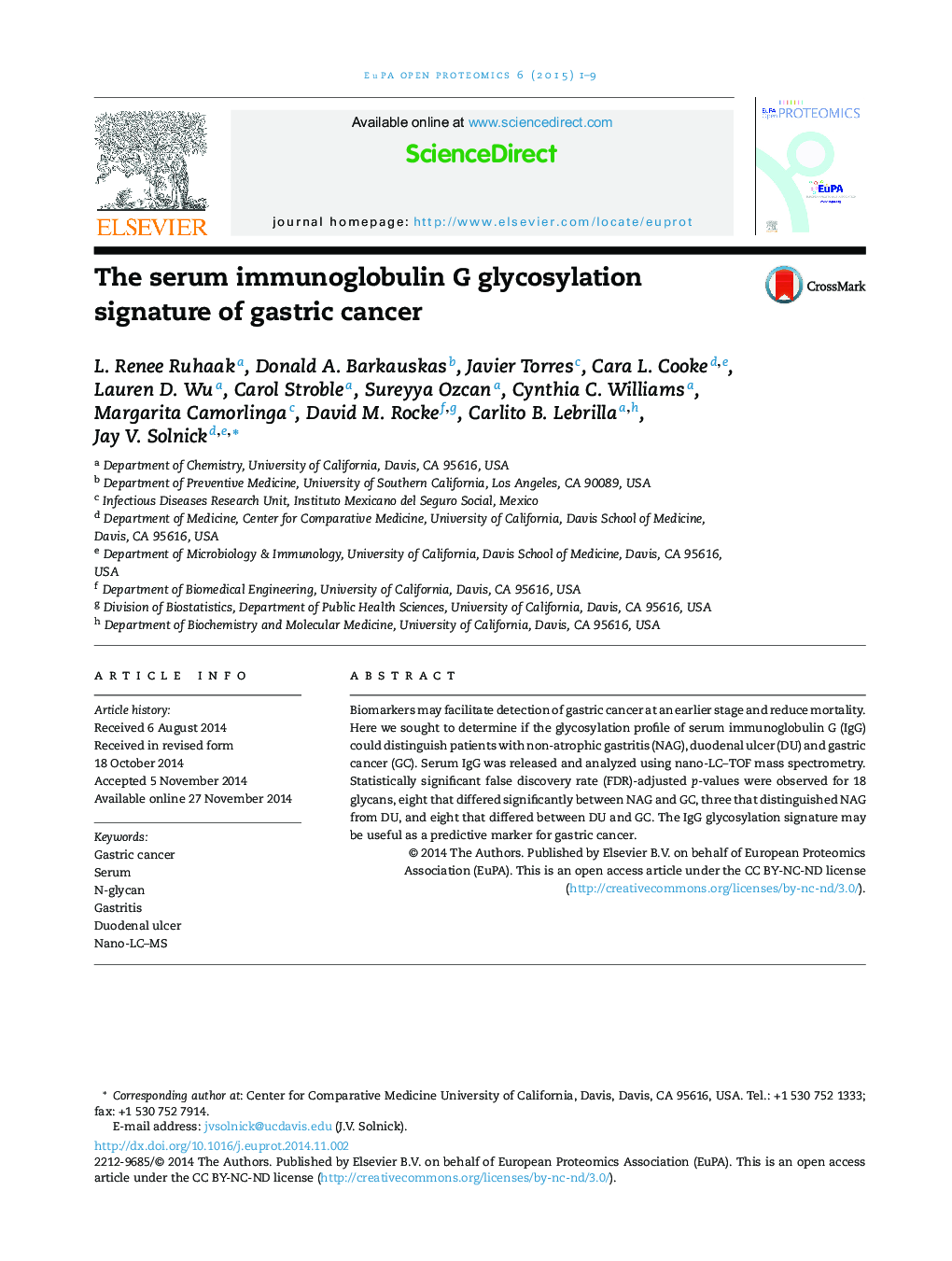| Article ID | Journal | Published Year | Pages | File Type |
|---|---|---|---|---|
| 1183557 | EuPA Open Proteomics | 2015 | 9 Pages |
•IgG glycosylation is monitored in serum of gastritis and gastric cancer patients (N = 66).•An average variability and IgG glycosylation of 25% was observed, similar to overall serum.•Non-galactosylated glycans are increased on IgG in serum of gastric cancer patients.•A differential glycosylation signature is observed between duodenal ulcer and gastric cancer.
Biomarkers may facilitate detection of gastric cancer at an earlier stage and reduce mortality. Here we sought to determine if the glycosylation profile of serum immunoglobulin G (IgG) could distinguish patients with non-atrophic gastritis (NAG), duodenal ulcer (DU) and gastric cancer (GC). Serum IgG was released and analyzed using nano-LC–TOF mass spectrometry. Statistically significant false discovery rate (FDR)-adjusted p-values were observed for 18 glycans, eight that differed significantly between NAG and GC, three that distinguished NAG from DU, and eight that differed between DU and GC. The IgG glycosylation signature may be useful as a predictive marker for gastric cancer.
Graphical abstractImmunoglobulin G glycosylation patterns differ significantly between gastric cancer cases and controls. Therefore, these patterns may provide valuable markers for the detection of gastric cancer.Figure optionsDownload full-size imageDownload as PowerPoint slide
